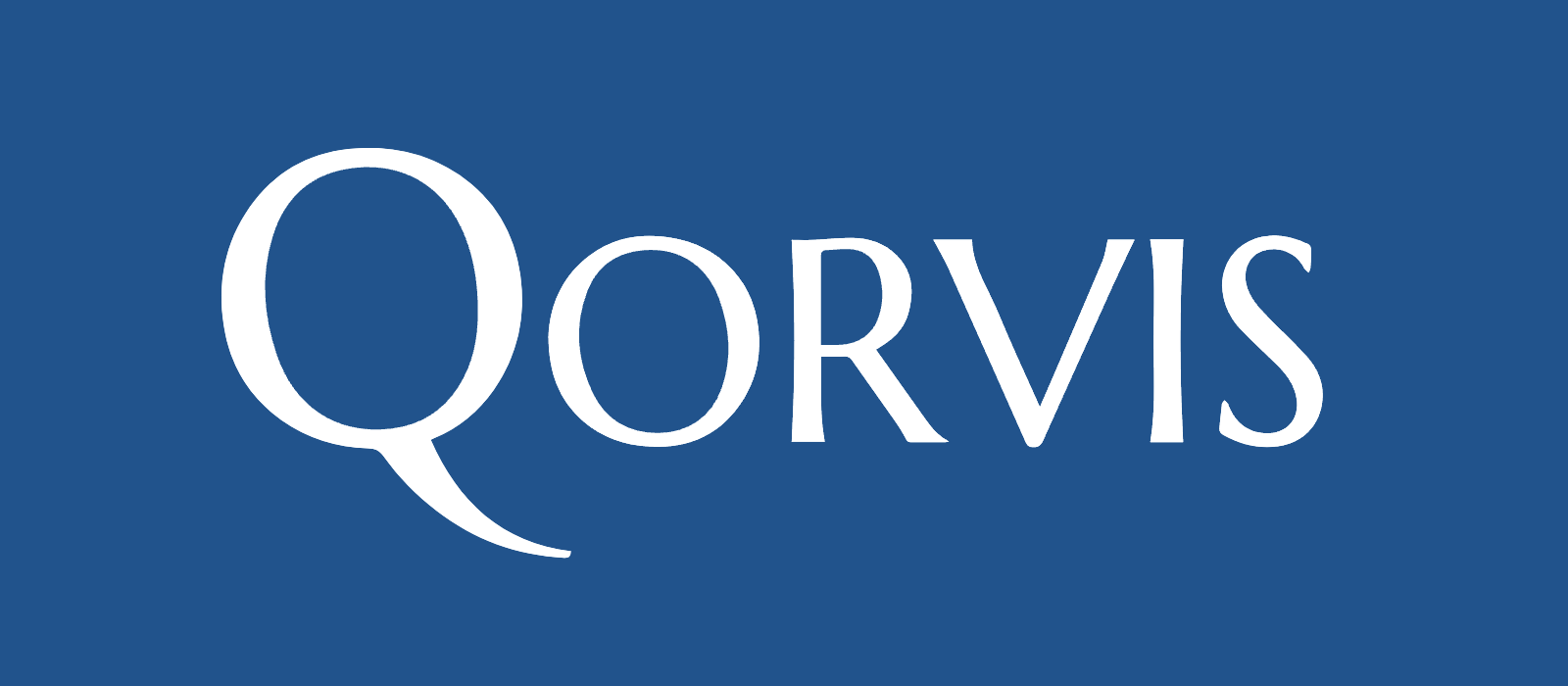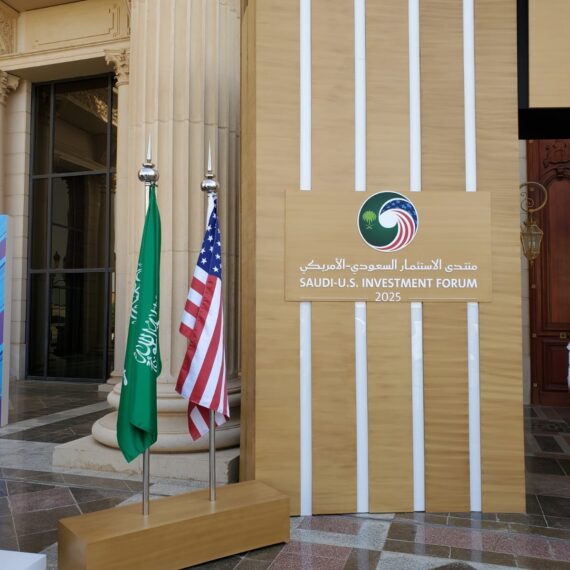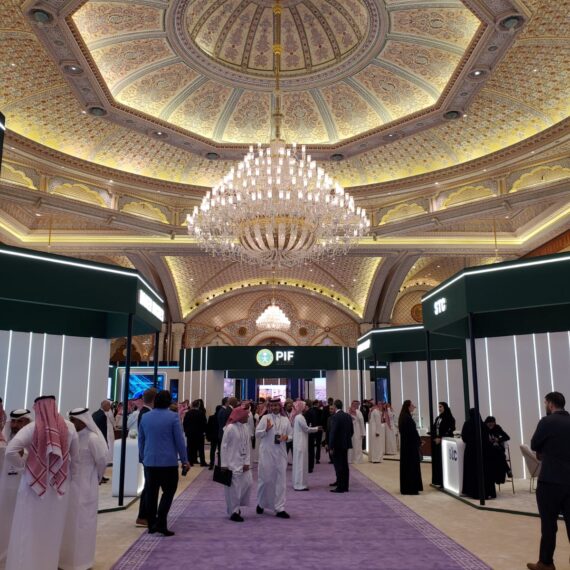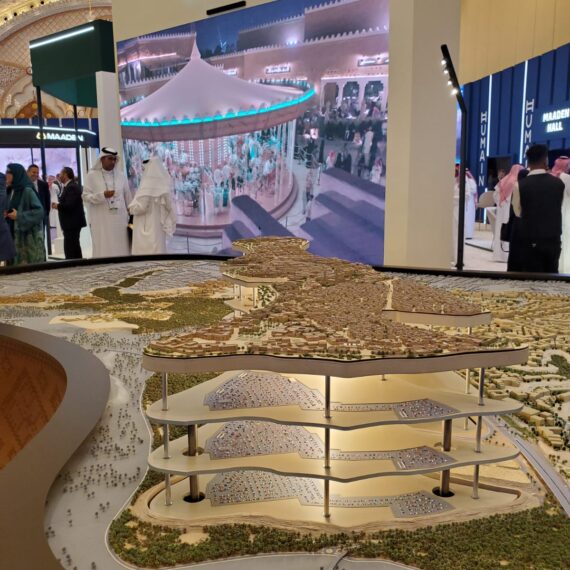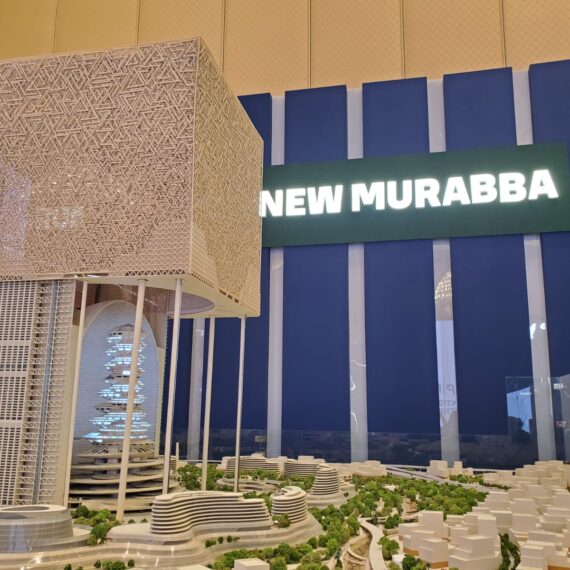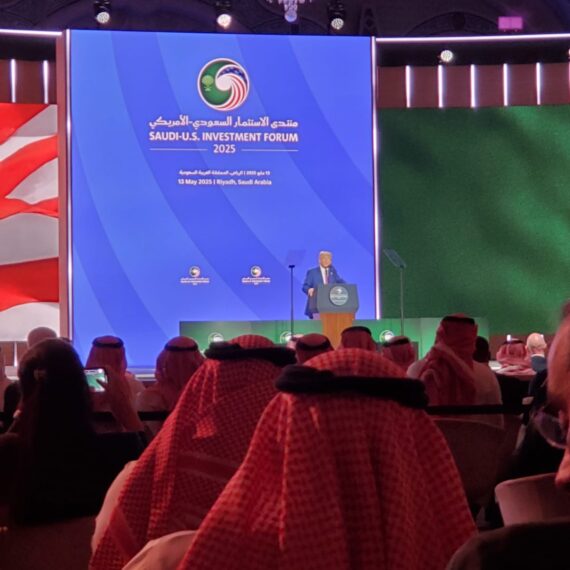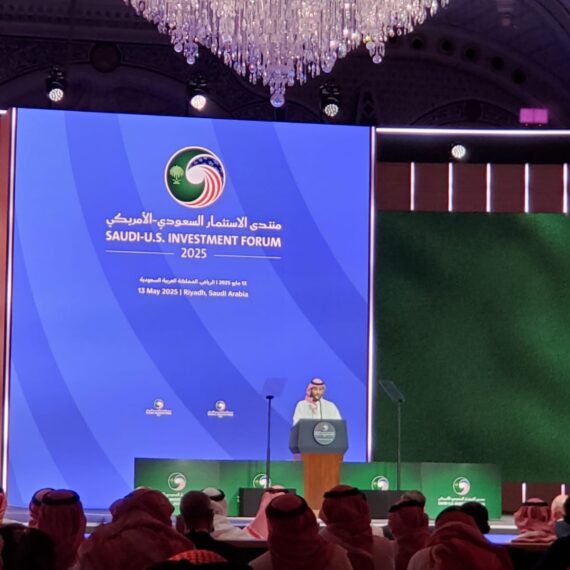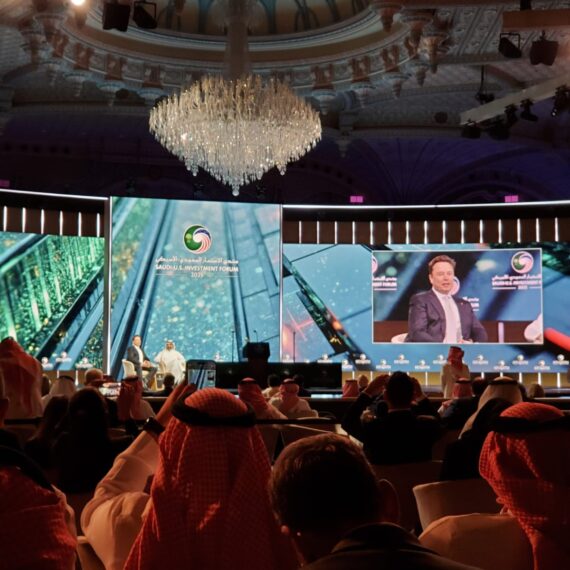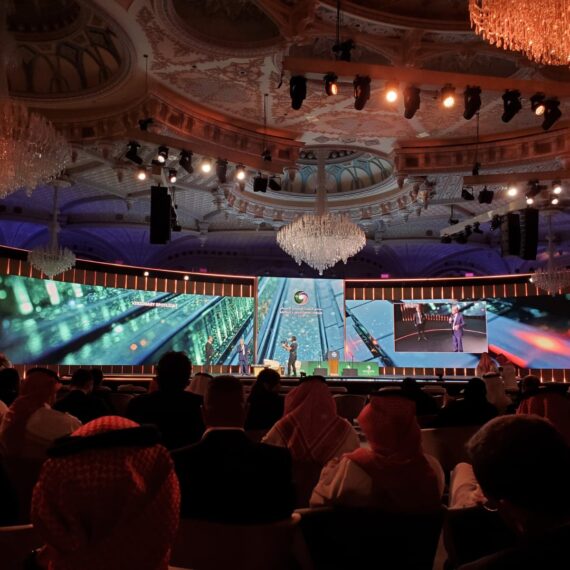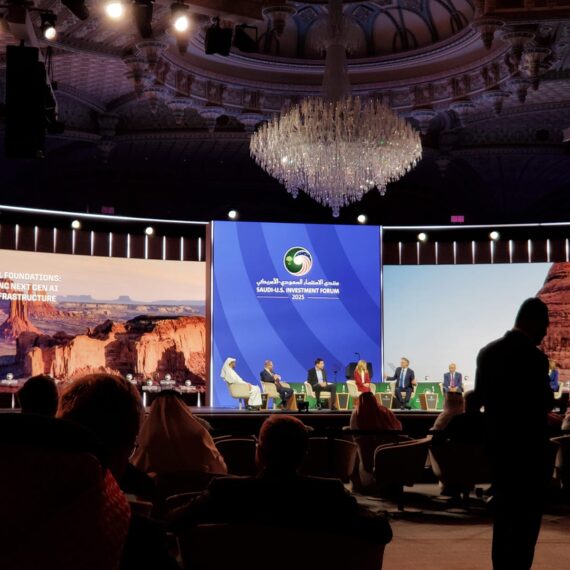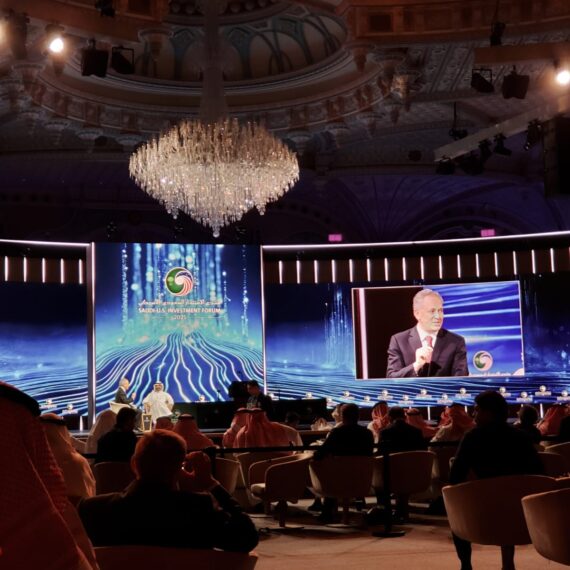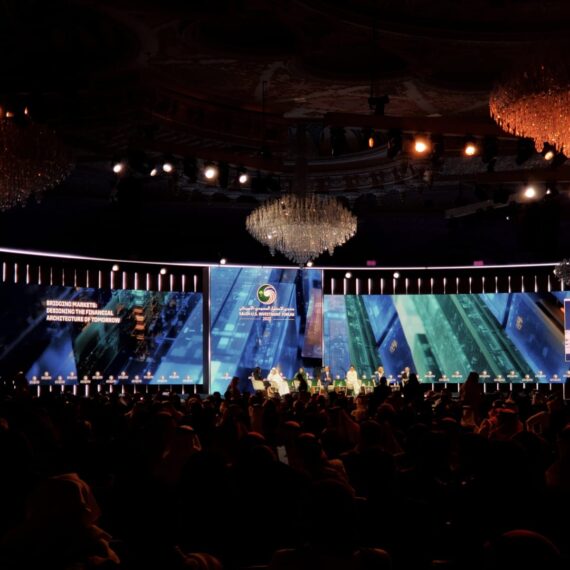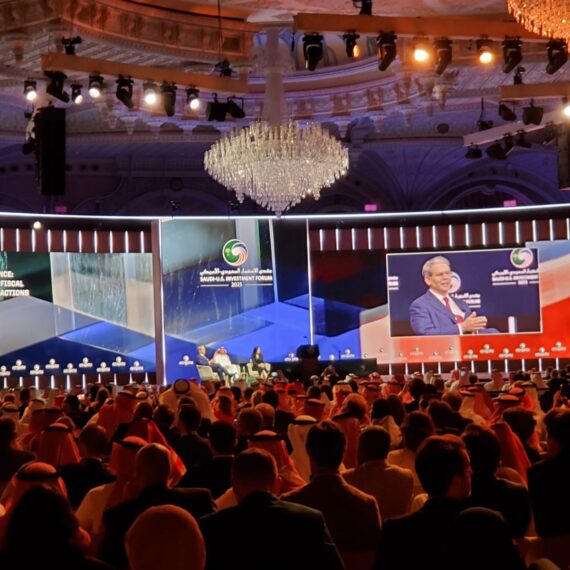Realism in Riyadh: The intersection of business and foreign policy
By Ian Dollar, Analyst, Dubai, Qorvis
Investors, innovators, and policymakers from the United States of America, the Kingdom of Saudi Arabia, and the Gulf region gathered at the King Abdulaziz International Conference Center in Riyadh on Tuesday, May 13th for the Saudi-US Investment Forum. It was a day dedicated to promoting commercial ties between the two countries. And yet for all the bonds forged, announced, or promised between the disruptors and titans of American and Saudi business, the strongest bond revealed by the forum was that between the leaders of each nation: President Donald J. Trump and Crown Prince Mohammed bin Salman.
From the very first panel there was a momentous sense of the shifting geopolitical landscape. Saudi Finance Minister Mohammed al-Jadaan was joined by US Treasury Secretary Scott Bessent, the principal topic of interest being Secretary Bessent’s recent meeting with his Chinese counterparts in Geneva. Bessent explained that a framework was agreed upon to reciprocally lower tariffs and prevent further tit-for-tat escalation of the kind that has characterized the last month of US-China trade relations. In what was undoubtedly a bit of marketing, he said that the escalations had been the result of misunderstandings among government officials below the level of President Trump and President Xi, who he said have an excellent relationship. Bessent claimed that the agreement in Geneva provides a mechanism for these officials to communicate with greater clarity.
Subsequently, there were a multitude of panels packed with household names in the world of global business providing a stream of glowing commentary on the US-Saudi business relationship and its future. One of the few moments of pause was a remark by Dr. Muhammed Al Jasser, Chairman of the Islamic Development Bank. Al Jasser explained that, considering American tariffs, some countries have questioned whether the bank should continue relying on the US dollar as its primary currency for financing projects. He also said that the dismantling of USAID poses a serious challenge for developing countries and that IsDB is eager to know if that stream of support will ever be restored.
There were positive updates on Saudi Arabia’s Vision 2030 and associated giga-projects like New Murabba, a pedestrian-friendly Diriyah, and Neom. There was praise for the economic diversification milestone the Kingdom hit two years ago: half of its GDP is now composed of non-oil activities. White House crypto and AI czar David Sacks announced – to the delight of most present – that the Trump Administration would end the, “Biden Diffusion rule,” which limits the sale of advanced chips to Saudi Arabia and other Gulf countries due to fears that this could allow strategically critical technologies in the AI race to fall into Chinese or Russian hands. Elon Musk arrived to announce that the Saudi government had approved the use of Starlink for aviation and maritime purposes and that self-driving Teslas would be seen on the streets of Riyadh in the not-too-distant future. The world’s richest man also opined that the US and Saudi Arabia could take part in a future where AI-powered humanoid robots proliferate to the tune of several billion units, increasing the standard of living for human beings by dramatically increasing productivity.
And then came the main event, kept secret until the day of the Forum: the appearance of the Crown Prince and the President. Crown Prince Mohammed bin Salman introduced President Trump, expressing gratitude for his visit and delighting in a strengthened US-Saudi relationship.
Touting business investments by Saudi firms in the US and a surprise announcement that the US would begin to remove sanctions from Syria to assist its new government in developing a stable status quo, the President’s central theme was to promote, “commerce, not chaos,” in the Middle East. Pithy though the idea may be, it was warmly greeted by the audience primarily composed of Saudi and other Gulf Cooperation Council (GCC) nationals.
President Trump reinforced his markets-over-munitions thesis by denouncing years of Western military intervention and nation-building. America will no longer give, “lectures,” to Gulf nations, he said, but rather will cheer their self-initiated progress toward greater prosperity and social harmony. The US will see them as regional partners with agency to chart their own course, not as students to be schooled in Western social mores and liberal democracy by NGOs. The President celebrated the rapid growth of the GCC countries, declaring that they have, “achieved a modern miracle, the Arabian way.” “That’s a good way,” he added.
While signalling the pride of place that the Gulf states enjoy in his foreign policy, President Trump’s removal of Syrian sanctions sent a clear a message to Iran as well. In February, he returned to his ‘maximum pressure’ sanctions campaign and subsequently stationed B-2 bombers in the Indian Ocean to force Tehran back to the negotiating table. His remarks in Riyadh gave him an opportunity to extend the proverbial olive branch: “If only the Iranian regime had focused on building their nation up instead of tearing the region down. Yet, I’m here today not merely to condemn the past chaos of Iran’s leaders, but to offer them a new path and … a far better and more hopeful future. … I have never believed in having permanent enemies.” That the President is willing to try to turn a former senior al-Qaeda fighter into a partner in Syria proves just that.
Another sure sign of the President’s unconventional approach has been the increased distance of late between the White House and Israel. Earlier this year he hosted Prime Minister Benjamin Netanyahu in Washington, but he declined to include Israel on his Middle East travel itinerary and he reportedly did not inform them prior to announcing a ceasefire between the US and the Houthis, who still pose a threat to Israeli shipping. On the issue of Syrian sanctions, the President sided with Turkey and Saudi Arabia over Israel, which is wary of the new government and continues to occupy a swath of Syrian territory stretching from Mount Hermon south to the Jordanian border that it seized last December when the Assad regime collapsed. The US bypassed Israel to directly negotiate the release of the last living American hostage held by Hamas, Edan Alexander, who was freed the day before President Trump’s trip to the Gulf. In its ongoing negotiations with Iran, the White House has sent mixed messages on whether the regime in Tehran could be allowed some level of uranium enrichment, an issue that has long been a red line for Israel. Without recalling his more fanciful ideas of creating a, “riviera of the Middle East,” during his address in Riyadh President Trump did state, to the applause of those present, that, “the people of Gaza deserve a much better future.” Aside from his desire to see Saudi Arabia join the Abraham Accords and a call for Hamas to release all remaining hostages who it took in October 2023, there was very little in the way of the President’s usually favorable rhetoric toward Israel. No doubt he was attuned to the sensibilities of the audience before him. But, coupled President Trump’s actions of the past month and Vice President JD Vance’s subsequent choice to skip a visit to Israel in light of its recent escalation in Gaza, Prime Minister Netanyahu and his cabinet will have taken notice that they lack carte blanche from Washington.
Time alone will tell if the negotiations with Iran or the attempt to inculcate stability in Syria will bear fruit. Much remains in flux. And yet, the fortuitous fall of the Assad regime and the unpredictability of the Trump Administration have created a sense in the region that the previously unthinkable is within reach. For those who seek to build the new Middle East, the unthinkable is precisely what they have in mind.

